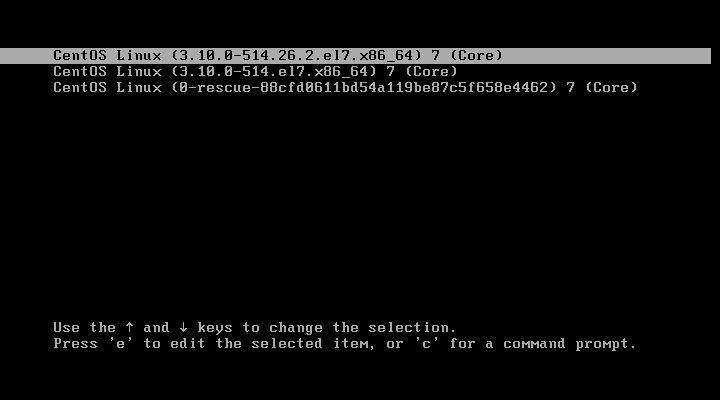

MMC device index for SD card: The mmc device index of the SD card. Specify the delay time for bootmenu displayed by mtkautoboot command.Įnable support for loading from SD card: When both mmc support, partition support and FS support are enabled, enabling this option will add a new file loading method for mtkupgrade command to support load file from SD partition. MediaTek bootmenu delay time: This is an idependent to standard bootmenu and autoboot. This is mainly used for debugging (Load by OpenOCD)
#Linux u boot tutorial upgrade

If only ubi partition exists -> Upgrade both kernel and rootfs to volumes in ubi partition.If both kernel and ubi partition exist -> Upgrade kernel to kernel partition, upgrade rootfs to rootfs vaolume in ubi partition.).Īn customized example is the mt7629 legacy bootmenu:īoard/mediatek/mt7629/bootmenu_mtd_legacy.cĪ) MTD (NOR/NAND/UBI): Based on mtdparts: Use default bootmenu: You can deselect this to use a customized bootmenu implementation (entries, command actions. If only firmware partition exists, it will boot kernel from mtd partition firmware.Īfter running defconfig command for u-boot, you can use menuconfig to modify the MediaTek-specific features: BootmenuĪRM architecture > MediaTek specific configurations > Enable bootmenu framework.If only ubi partition exists, it will try to load and boot kernel from ubi volume named kernel.If both kernel and ubi partition exist, it will boot kernel from mtd partition kernel.Try to boot kernel from the partition named kernel defined in GPT.This command will boot firmware according to configuration: This command is similar to mtkupgrade, but only load data into memory. Input TFTP server's IP address: 192.168.1.2Īfter all prompts above, this command will start to receive file data and then write it to the flash device: Using device If you selected TFTP client, it will then ask you for some network configurations: Input U-Boot's IP address: 192.168.1.1 You can also press enter directly to select TFTP client. If mtkupgrade is called without parameter, it will first ask you to choose a part: Available parts to be upgraded:Īfter you slect the part, or you just called this command with the part parameter, it will ask you to choose a transmission method: *** Upgrading ATF BL2 ***Īgain, press a number to select a method. Upgrade single image (ROM dump), not recommended for use

If no error occurs, the target file are bl2.img and fip.bin located in /build//release The overall command line is: make -f Makefile PLAT= BOOT_DEVICE= B元3= all fip To compile ATF, we have to pass several configuration parameters to the make command line. If no error occurs, the target file is u-boot.bin. Run the following command in u-boot source directory: make CROSS_COMPILE=Īssume you have a toolchain located at ~/openwrt/staging_dir/toolchain-aarch64_cortex-a53_gcc-8.4.0-musl, and a directory named aarch64-openwrt-linux is inside the toolchain base directory, the toolchain-prefix will be: ~/openwrt/staging_dir/toolchain-aarch64_cortex-a53_gcc-8.4.0-musl/bin/aarch64-openwrt-linux. To configure the u-boot, please run the following command in u-boot source directory: make XXXXX_defconfig

**** MT7622 has two SD/eMMC controllers (called MSDC), the first one always connects to the eMMC and the second one always connects to SD. *** MT7622 uses a dedicated SPI-NOR controller while MT7981/MT7986 use standard spi-mem controller. ** SPI-NAND without SNFI means the SPI-NAND is connected to the standard spi-mem controller. * SPI-NAND (SNFI) means the SPI-NAND is connected to the MediaTek SPI-NAND Flash Interface (SNFI), a dedicated controller for SPI-NAND flashes using MTK's HW ECC engine instead of the On-die ECC engine from SPI-NAND chip.


 0 kommentar(er)
0 kommentar(er)
